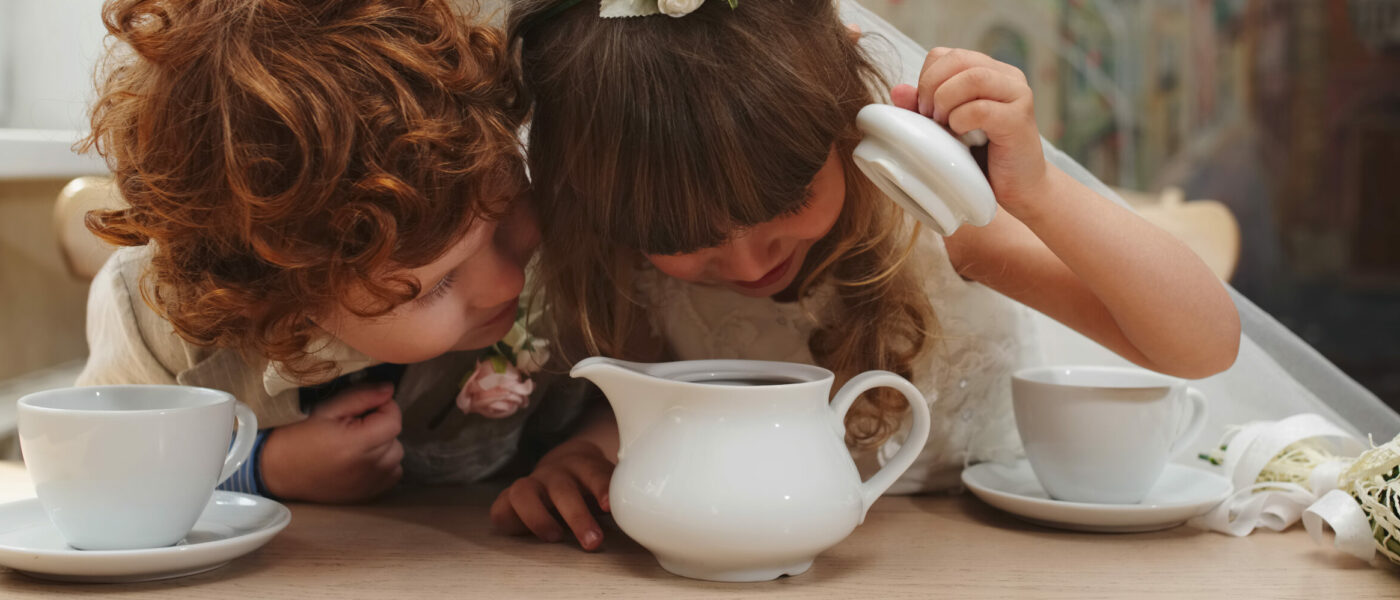
As an early childhood teacher I have worked a lot with younger children, and it was my job to develop their learning in many ways. One way which is my particular favourite, is through the use of real-world situations in play. When children play, they develop a sense of wonder and understanding of the world, whilst developing their language, cognitive, physical, and emotional domains. For the parents among us, I would like to share with you how you can incorporate your love for tea in your child’s play, and how it can have amazing learning, and even health benefits.
Types of Tea That Are Safe for Children
Firstly, for any child under the age of 12, it is recommended that they do not consume caffeinated tea as this can have negative effects on your child’s blood pressure and heart rate. Alongside this, it can also upset your child’s stomach, cause vomiting, nervousness, headaches, and trouble sleeping. Make sure you check your tea before using as black, oolong, white, and green teas contain caffeine, even those decaffeinated.
There are however, a range of herbal teas that do not contain caffeine that are perfectly safe for children 2 years and above. Never give any type of tea to an infant who is below 2, as they are still developing their immune systems, and ingesting any type of tea, including herbal, can be an allergy trigger. Herbal teas that are safe for children over 2 years can include: Rose Tea, Peppermint Tea, Ginger Tea, Chamomile Tea, Lavender Tea, and a range of Fruit Teas. Always check with your healthcare professional if you have any concerns before introducing herbal tea to your child. The above teas are not only safe to drink, but can help to manage symptoms such as stomachaches, constipation, nausea, gas, colds, sore throats, and mild restlessness.
Having Fun with Tea Parties
Once you have decided on what tea is best suited for your little one, now here comes the fun part! Of course, if you do not wish to use real tea you can always substitute with your child’s favourite drink, or your special ‘imaginary tea.’ Playing tea parties can be done with you and your child, your child and their friends, or your child with their plushies and dolls. Setting the environment for children to play is very important, as it enables them to use these resources as tools to learn. So, how does this help to build children’s relationships with others? Let me go on…
Whomever the child is engaging in play with, they are also engaging in social skills with the other party. Simple conversation is helping them feel valued and listened to, and helps to develop their language skills. Sharing and pouring tea to others is not only building their independence and confidence, but is teaching them the value of sharing and making friends. It can teach children how to take turns in filling each other’s cups, and to respect when it is the other person’s turn. Children can take agency over their actions by expressing their feelings like when they have had enough tea, or how much tea they would like. They can learn not only about themselves, but about others, which encourages their listening. Most importantly this play scenario aids children in caring for others and helps to regulate their emotional wellbeing.
For most of us, I would say sitting around with our family, nursing a cup of tea is a ritual or celebration that brings us together. Engaging our children in this helps to develop a sense of community and strengthen relationships within. Obviously, this is only one of many ways for children to play, but it is nice to know that something as simple as tea can have such a positive effect on both health and development. Plus, it gives us an excuse too, to unwind with a cup of tea which is always welcomed.


